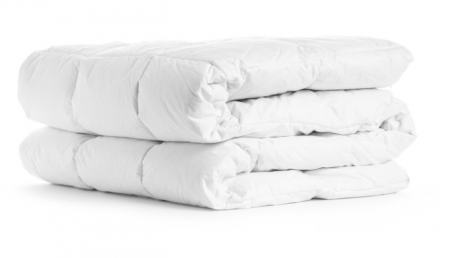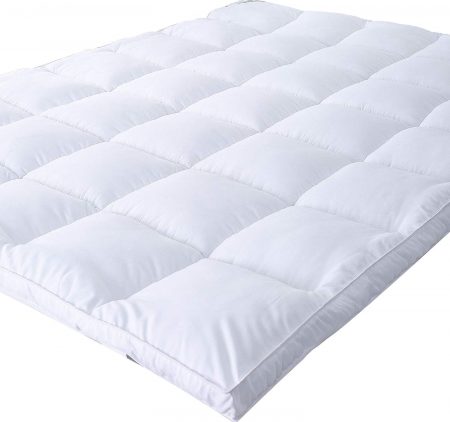Best Fiber Mattress Toppers Buyer's Guide
A ‘topper’ refers to any individual cushioning layer that can be placed on top of a mattress or other sleep surface for additional softness, comfort and — in some cases — improved support. Some toppers fit beneath top sheets, while others lie freely on the comfort layer of the mattress. Toppers are available to accommodate most standard mattress sizes; the topper is slightly smaller than the mattress, allowing it to fit more easily beneath the sheet.
A ‘fiber topper’, also known as a ‘fiberbed,’ is typically constructed with polyester or down alternative puff fiber fill encased in a fabric or microfiber cover. Cover composition for fiber toppers varies by model, but most are made from cotton, polyester, and/or rayon. Some fiberbed covers are made from organic cotton, as well; these models tend to have higher price-points.
What Are the Pros and Cons of Fiber Toppers?
Benefits of using a fiber topper of fiberbed include the following:
- Low Cost: Fiberbeds are among the least expensive mattress toppers sold today, with an average price-point of $60 to $100, and they tend to provide more ‘bang for your buck’ than other topper types.
- Pain and Pressure Relief: Fiberbeds can improve the comfort and softness of most sleep surfaces, which may help reduce pain and alleviate pressure points in the neck, shoulders, lumbar region, and other potentially sensitive areas of the body.
- Lightweight: Most fiber toppers weigh 10 pounds or less, making them relatively easy to adjust and maneuver during the night compared to other toppers.
- Ease of Movement: Fiber beds do not sink deeply or conform closely, which provides a low-resistance sleep surface.
- Good for Sex: Fiberbeds are fairly responsive and do not restrict movement to a significant extent, making them highly suitable for sex.
- No Odor: Compared to other topper types, such as memory foam or wool, fiber toppers emit minimal odor when they are unpackaged and owners report little to no long-lasting smells.
Notable drawbacks of using a fiber topper are as follows:
- Short Lifespan: Fiberbeds often become flat or misshapen after limited use, which can reduce their ability to provide optimal comfort and softness.
- Noise Potential: Many fiberbeds produce sounds when they are bearing weight, which may lead to sleep disruptions for people who awaken easily due to noise.
- Poor Motion Isolation: Compared to other topper options (such as memory foam and latex models), fiberbeds do not absorb or isolate motion to a significant extent. This may be problematic for couples who share a mattress.
- Sleeping Hot: Temperature neutrality in fiberbeds often varies by specific materials used, but generally speaking these toppers sleep somewhat hot.
- High Maintenance: Fiberbeds require constant shaking and fluffing in order to maintain optimal loft and shape. Additionally, washing them in machines can cause early deterioration; dry cleaning is recommended instead.
- Limited Thickness: Most fiberbeds measure two inches thick or less, which may be too limiting for sleepers who prefer thicker, fuller toppers.



